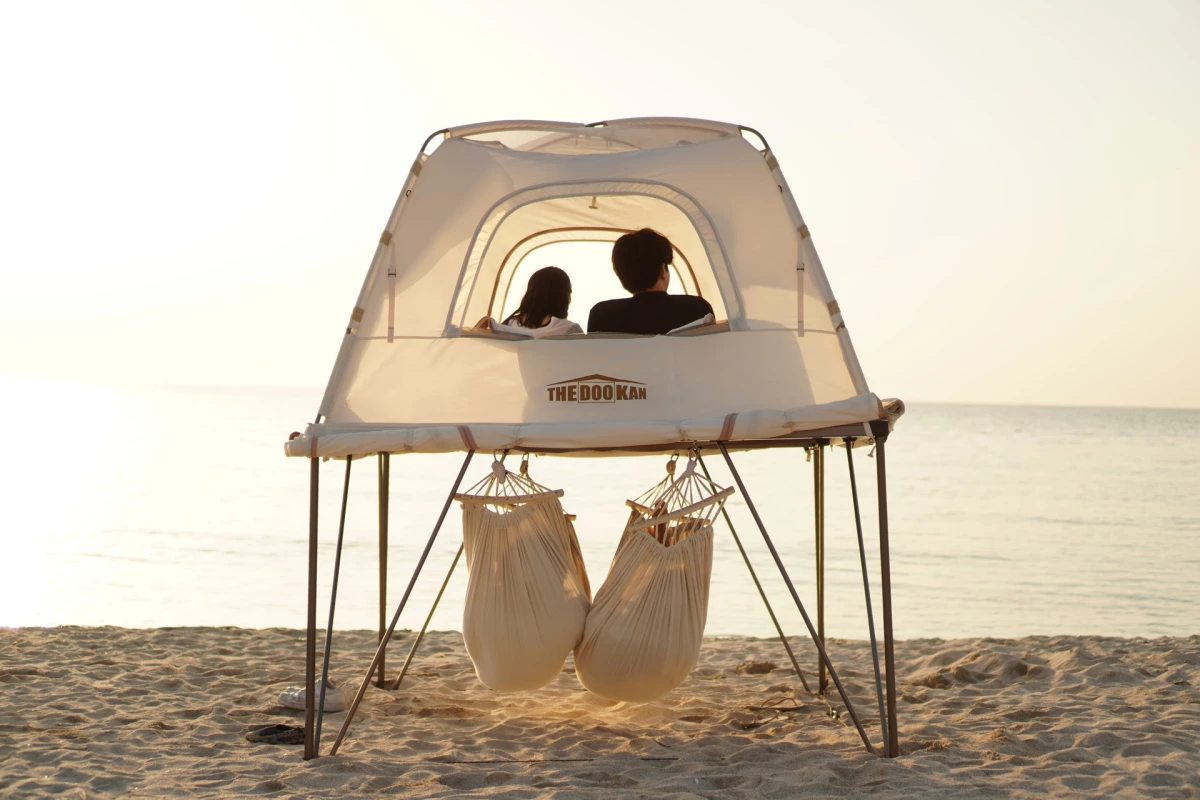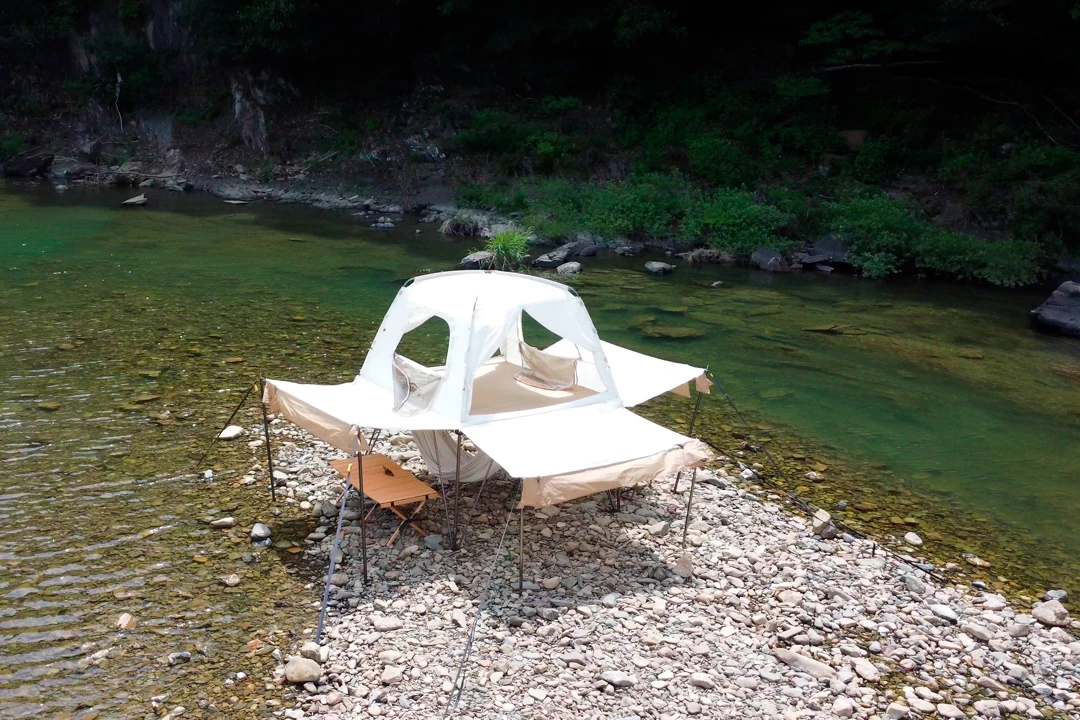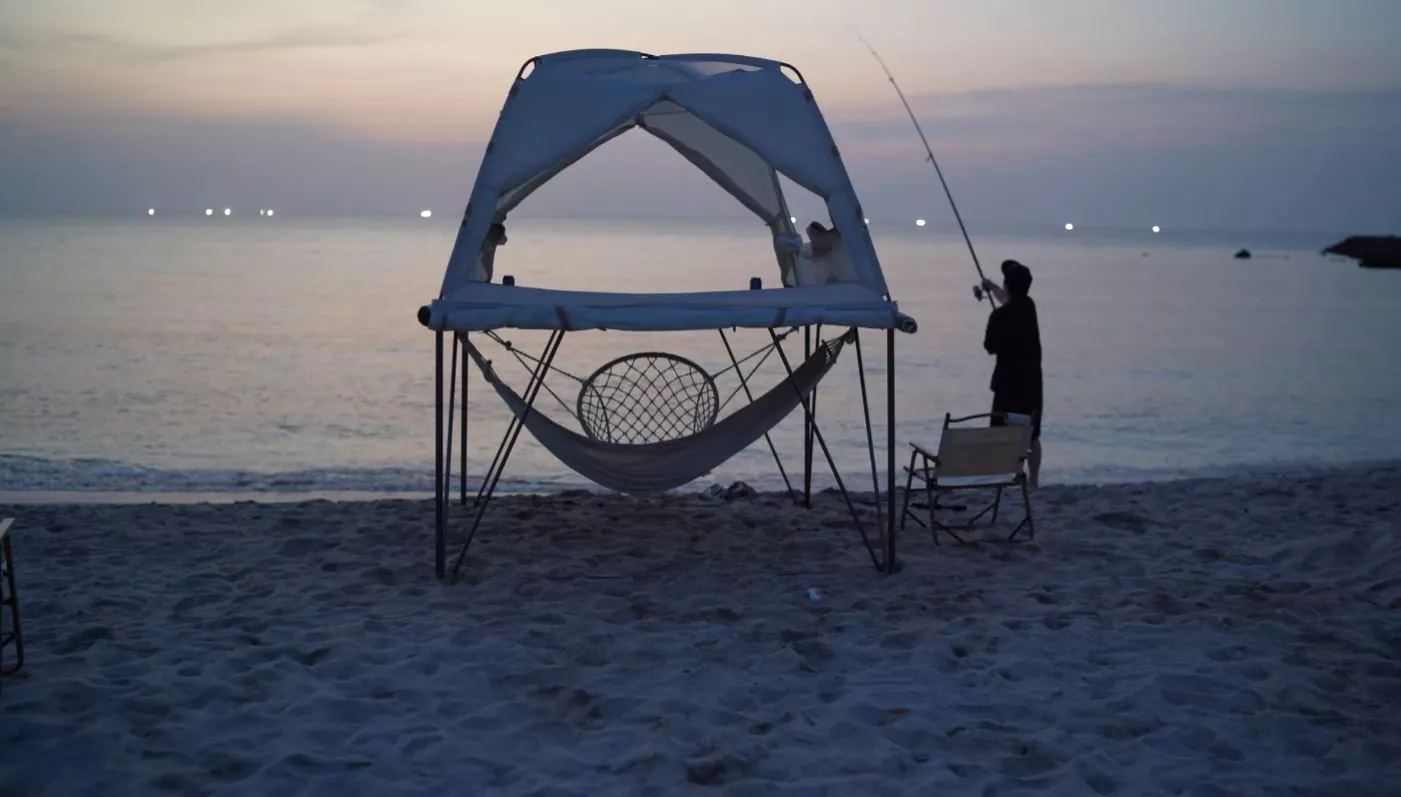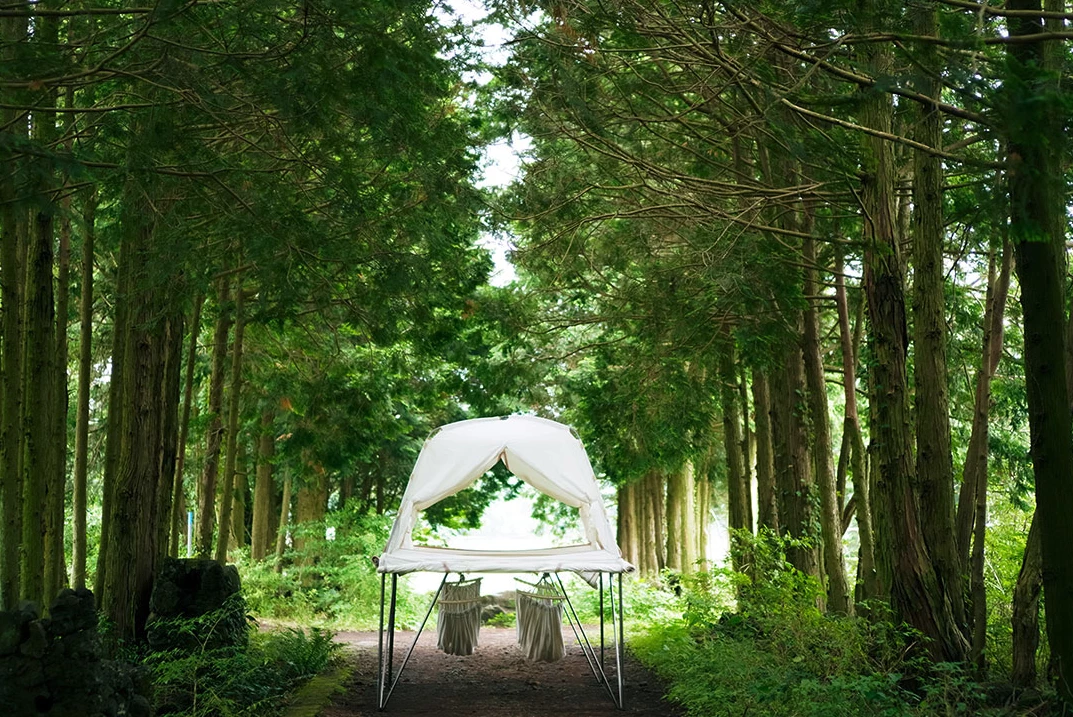A new startup looks to combine the primitive elements of earth, water and air into a camping experience unlike any other. Something like a rooftop tent without the car, The Dookan tent stands up over the ground on short or extended legs, lifting campers for a breezier, more scenic night. Those inside enjoy a flat suspended floor with near-trampoline levels of cushioning, while additional sleepers can string up hammocks and dangle below, over the ground. The versatile tent can also be set up on the water ... either at shoreline's edge or floating out on a pair of paddleboards.
We've slept in ground tents. We've bathed in the shade of camp and beach awnings. We've spent nights in rooftop tents. We've swayed below sky-piercing redwoods in tree tents. And we've at least seen, though not tried, floating tents and lifted tents with cot-like floors. Handybro, the name by which the New York-based team behind The Dookan tent has decided to go, looks to combine elements of all of those into a single shelter made for car camping, beach bumming and lake cruising.
The foundation for The Dookan's multiple configurations is the fully collapsible square-tube aluminum frame with floor that looks like a cross between a large cot and a square 79 x 79-in (201 x 201-cm) trampoline. This platform can be used on its own as a comfy above-ground day bed, but its main use involves serving as the floor for the accompanying tent to create a day cabana and overnight shelter. The floor can sit just under 16 inches (41 cm) off the ground with the shorter "first story" leg set or stand at 47 in (119 cm) high on the "second story" legs.
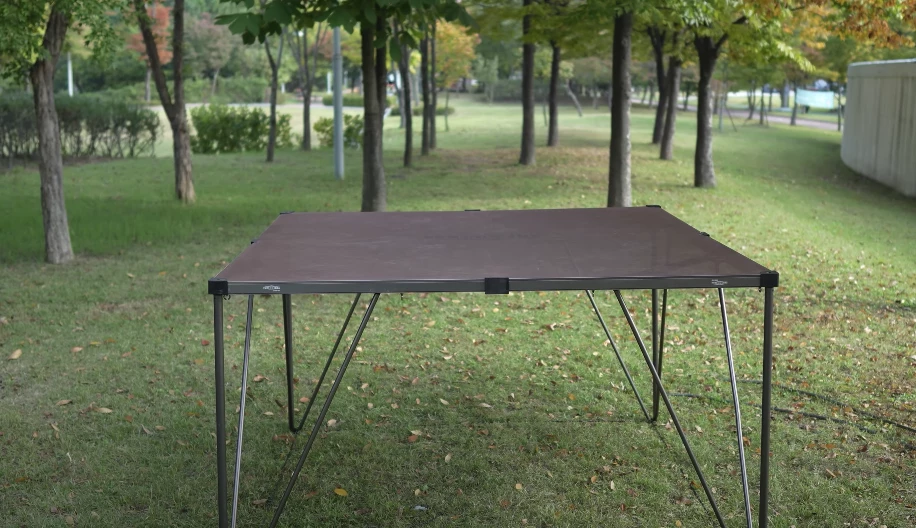
The tent itself is made from weatherproof poly-cotton fabric and features openings on all four sides for adjustable comfort. Secure the front and rear entry fabric to the corners, drop open the side windows, and you have a cool sun shelter for hot days. It even includes a four-panel mesh roof for added ventilation and views straight up to the sky.
Those openings can all be closed up during inclement weather and cool nights, and a transparent rain fly can be added over the mesh roof. The floor looks like it will provide a nice combination of supple give and flat support similar to a flat-sleeper hammock or tree tent.
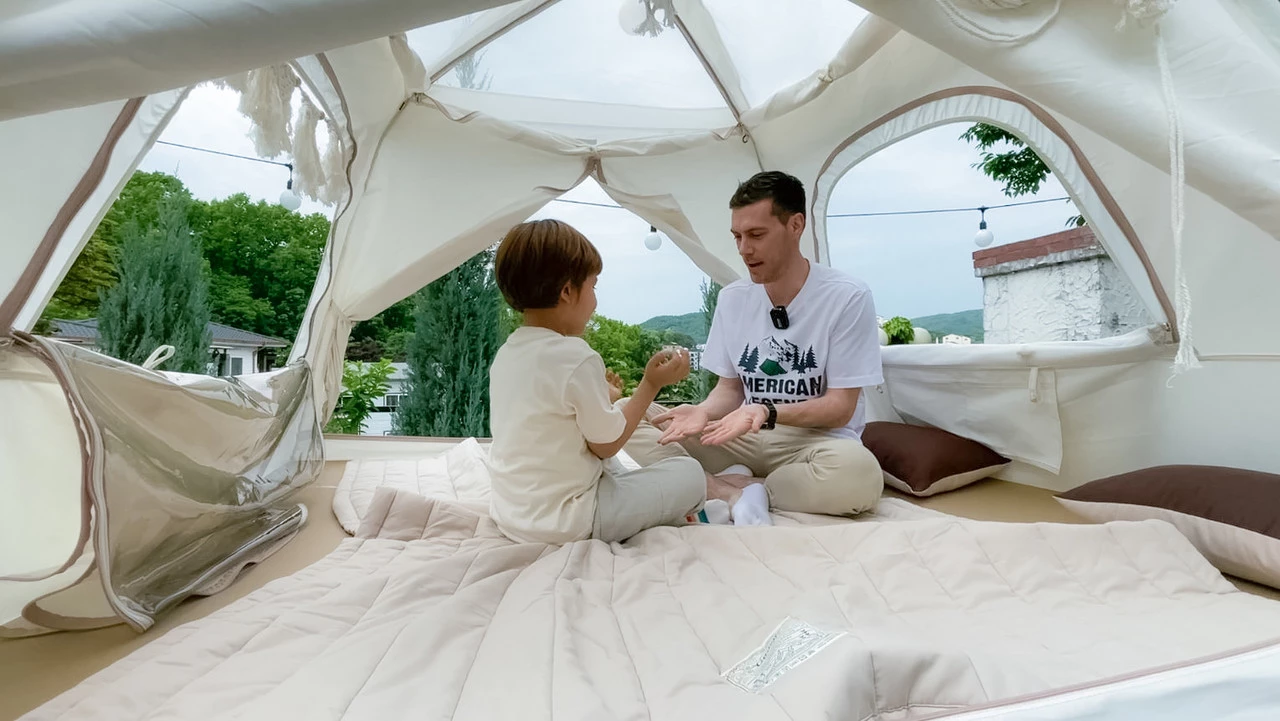
The Dookan frame is designed to support up to 660 lb (300 kg), so in addition to the campers sleeping up top, it can hold up to four hammocks for other campers or daytime loungers below the floor. The rollable tent skirts drop down to become walls around the frame legs, creating another sheltered sleeping area, albeit one without a floor.
The stilted two-story configuration looks like it might topple over in the lightest whisper of wind, but Handybro says it will stand up to winds up to 22 mph (35 km/h) without stakes and double that when fully staked. It even shows some testing videos to prove it.
For more ambitious Dookan day explorers and campers, the low frame can be attached to a pair of paddleboards and floated out on the water via paddle or small motor, either as an open platform or as a full tent. As the former, it can be used as a fishing, swimming or sunbathing platform. As a tent, we gather it's best-suited to use as a floating day cabana rather than as an overnight shelter.

The Dookan definitely isn't designed for campers who like to go lightweight. The frame weighs over 50 lb (23 kg) alone, and users can add another 24 lb (11 kg) for the tent skin and another 19 lb (8.6 kg) for added components such as the roof fly and step ladder. So that's over 90 lb (41 kg) worth of tent bulk to haul around home, vehicle and camp.
We question how much of a market there is for a complicated, four-figure heavyweight like this, but it's doing quite well so far on Kickstarter, where it's raised nearly 12 times its goal for just under US$60,000. The full set is on offer for pledge levels of $2,213, while just the platform frame slots in at $1,432.
Source: Handybro
